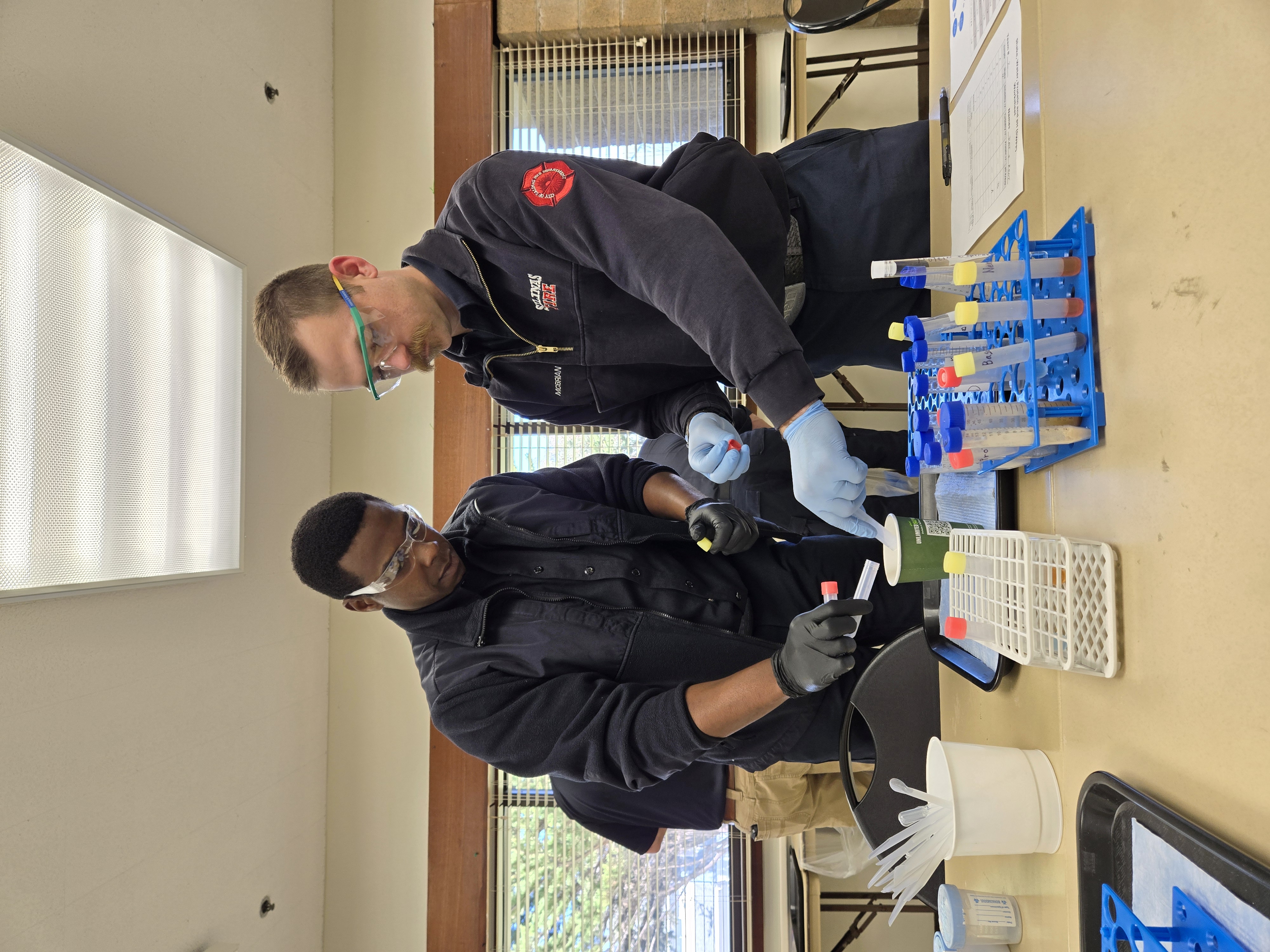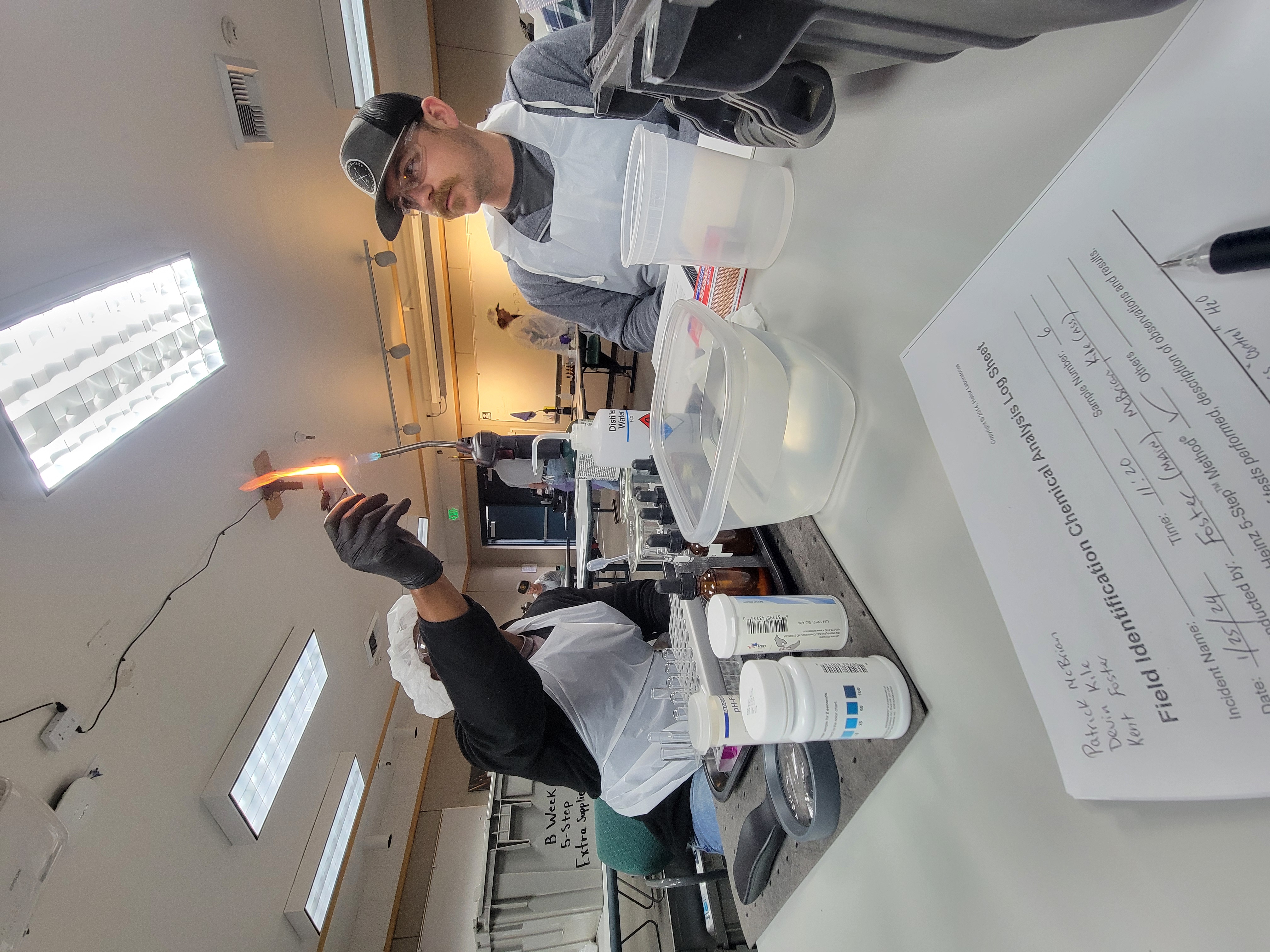Hazardous Materials (HazMat)

Battalion Chief Douglas Dirksen
Battalion Chief Douglas Dirksen has over three decades of invaluable experience with the Salinas Fire Department. Currently, he serves as the battalion chief of C platoon, overseeing critical operations with a steadfast commitment to safety and efficiency. Chief Dirksen's expertise extends to hazardous materials management, where his leadership ensures swift and effective responses to any hazardous incidents. Additionally, he plays a pivotal role in advancing the department's capabilities through the management of the drone program, utilizing innovative technology to enhance emergency response strategies.
Hazardous Materials Response Program
Hazardous materials (Haz-Mat) are found in every community, homes and businesses, and transported on roadways, by air, and by sea. Responding to actual or potentially hazardous materials incidents is one of the many tasks performed by SFD. Although these types of incidents are less common than other types, hazardous materials, if released, may cause harm to people, the environment, critical infrastructure, and property.
Firefighters responding to any situation involving hazardous chemicals or materials must have adequate training and proper personal protective equipment (PPE) to handle any such incident. All 90 SFD personnel are trained at a minimum to the Hazardous Materials, First Responder Operational (FRO) level, as well as Hazardous Materials First Responder Decontamination (DECON) level, certified by the State of California, and as required by the Code of Federal Regulations (CFR 1910.120[q]). In addition to FRO certification, SFD has 21 personnel certified at the Hazardous Materials Technician/Specialist level; 21 certified at the Weapons of Mass Destruction (WMD) level; and four certified as Haz-Mat Safety Officers. At the time of this report, the number of certified Haz-Mat Incident Commanders was not determined.
When responding to a hazardous materials incident, the primary responsibility of the firstarriving engine company is to secure the scene, identify the substance (if possible), and make proper notifications. This initial action ensures that the safety of the public and emergency responders is the foremost priority. Should any hazardous chemical or materials incident exceed SFD’s resource capabilities, a request is made to activate the multi-agency hazardous materials response team. This team is comprised of personnel from SFD, the City of Seaside, which provides two to four personnel, and the Monterey County Environmental Health Department. The Governor’s Office of Emergency Services (Cal OES) has certified the countywide team to Type I.
SFD owns and maintains a dedicated response apparatus, HAZMAT-1, located at SFD Station 5. This apparatus, which Cal OES types as a Type-I vehicle, contains the necessary equipment for detection, monitoring, entry (including level A and B suits), decontamination, plume modeling, spot weather forecasts, and equipment for plugging diking, and spill containment. For team-deployment, the Seaside Fire Department responds a similar-type apparatus, HM-22, classified as a Type-II resource provided by the California Office of Emergency Services.
Recent News
Over a 6-week period, 5 dedicated @salinasfirefighters embarked on a journey to become state certified Hazmat Specialists!


Currently, there are 18 members on the Type I Hazmat Response Team. This team can be deployed and perform special operations all over the county, state, and nation!



